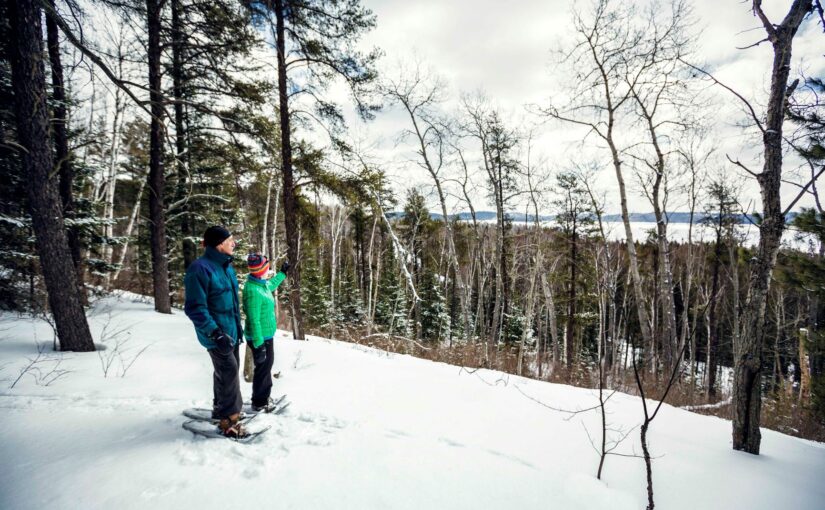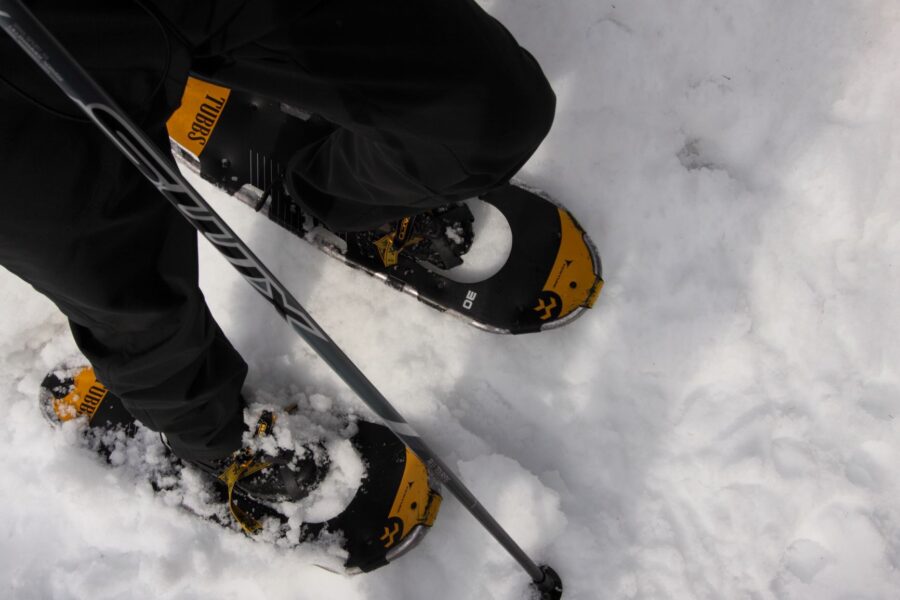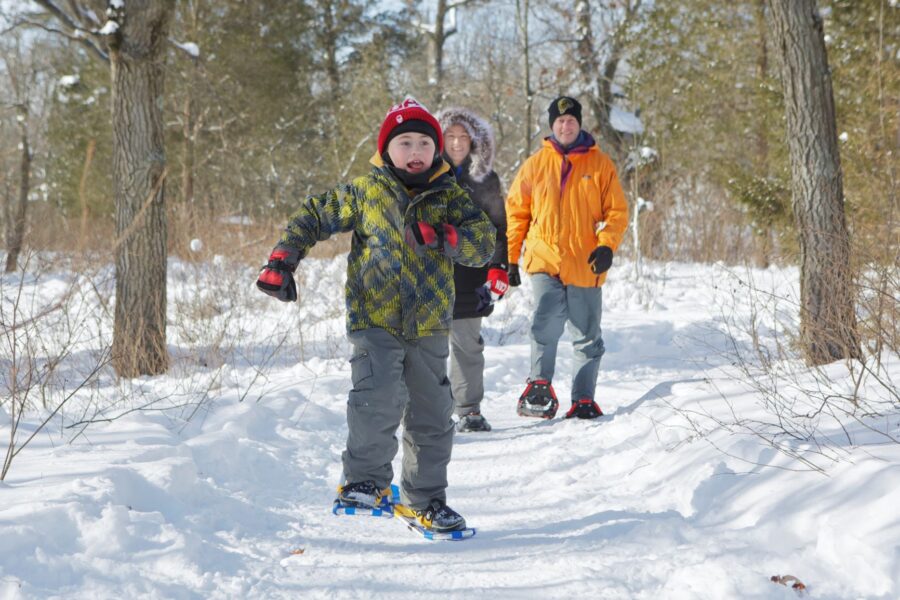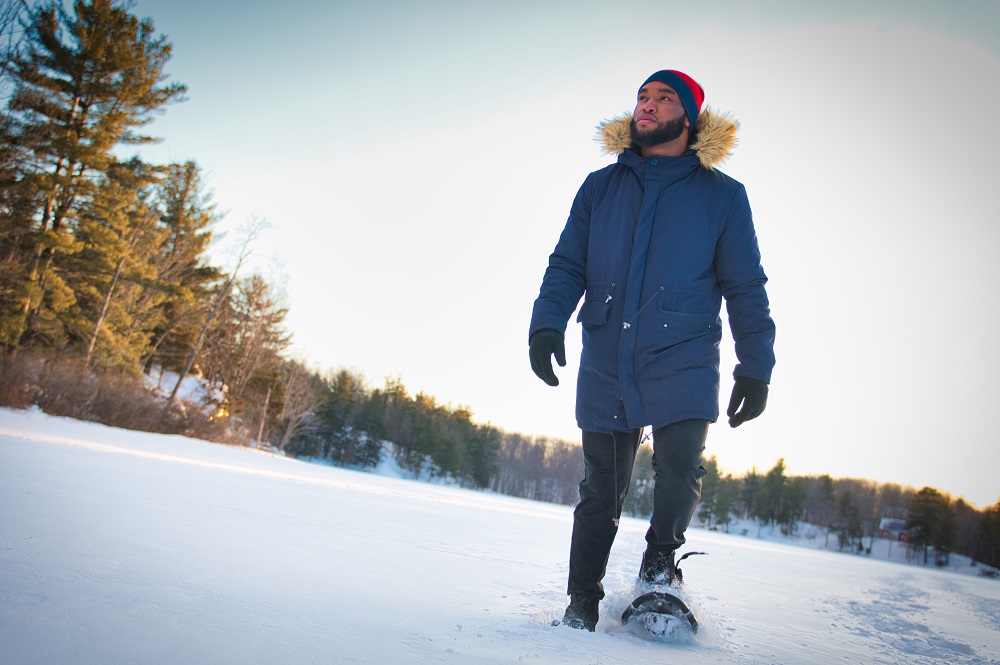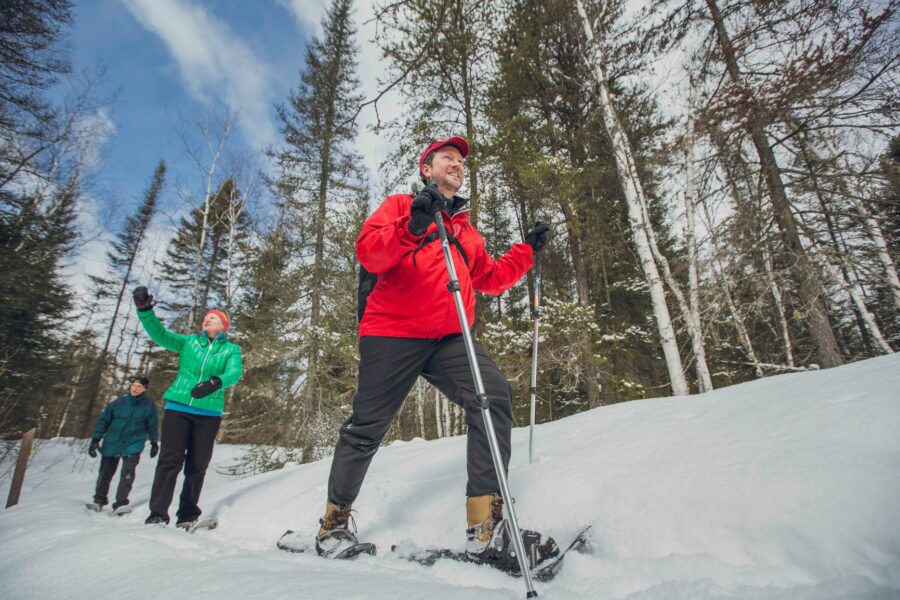This winter, outdoor activities are a great option to keep you happy and healthy. It’s the perfect time to try something new – like snowshoeing!
For any winter activity, planning ahead and a bit of research can go a long way to make sure your day is safe and fun!
So what does a beginner snowshoer need to know?
Snow safety
Snowshoeing is like any other winter sport – some advance planning is required.
It gets dark earlier in the winter, so leave yourself lots of time to complete your route during daylight hours.
Make sure you check the hourly weather forecast before you head out and adapt accordingly. It’s a great idea to pack an extra pair of socks and mitts in case you get cold or damp.
And don’t forget to bring some water – hydration is key even when it’s cold out!
If the (snow)shoe fits!
Snowshoes strap to your winter boots and spread your weight out over a larger area, making it easier for you to walk on top of snow without sinking down.
Snowshoes come in different sizes. The best one for you will depend on what type of snow you are walking in.
Smaller snowshoes are good for heavy packed snow, bigger is better for powdery snow.
The size of snowshoe you need can also depend on your weight including your coat, accessories and backpack.
A small snowshoe will give you more agility, while a larger one allows for exploration of uncharted territories. If you feel a need for speed, choose a smaller snowshoe. If you want a leisurely stroll, go bigger.
Best boots?
The snowshoe straps will hug your feet, so a sturdier winter hiking boot (that isn’t too soft) works best. Pick a warm boot with good water resistance.
If you are shopping for new snowshoes, it’s a great idea to take your boots with you to try them on together.
Dress for success
Lots of layers will help you adjust to the temperature and your exertion level.
A merino wool base layer is a great start and helps with breathability. Pick your mid layer based on temperature. You can then add waterproof pants and a shell jacket for your upper body.
Pick your path
For beginners, choose a shorter and more level trail.
While you may breeze through the same trail when walking, snowshoeing uses different muscles and can be more physically demanding.
The length of trail you choose will also depend on your level of physical fitness and the amount of time you want to spend outdoors.
Not sure? Pick a shorter route. If you blaze through it, you can always do a second loop!
If at first you don’t succeed…
It may take little bit of time to get used to walking on snowshoes. You might fall. And that’s okay! It’s all part of learning.
Getting back up on your feet isn’t hard. Roll your weight on to one side, and get up using your hands and knees.
Worried about balance or traction? Bring some walking poles with you to help with stability.
Ready to give snowshoeing a whirl?
Find a park close to you, and visit our Healthy Parks Healthy People webpage to learn more about the health benefits of getting outside.
What are you waiting for? Set out for a snowshoeing adventure, and feel the benefits of spending time in nature!
